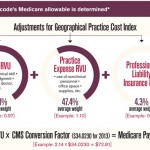“Two-thirds of all DXA and VFA machines are in private offices, so physicians in private practice will be affected the most,” he adds.
“If these cuts go through, the work RVU for DXA will be equivalent to that for a finger X-ray,” says Sanford Baim, MD, a rheumatologist and associate clinical professor of medicine at the Medical College of Wisconsin in Milwaukee.
Interestingly, the reductions imposed by the CMS run counter to the recommendations that appeared in “Bone Health and Osteoporosis: A Report of the Surgeon General,” published in 2004. “Federal initiatives encourage people to get more DXA screening,” Dr. Laster points out. “It’s often included in the ‘Welcome to Medicare’ exam. There seems to be a disconnect between the people setting the policy and those who are enacting the RVUs.”
“These cuts make no pharmacoeconomic sense,” says Thomas Olenginski, MD, an associate in rheumatology at Geisinger Medical Center in Philadelphia. “They’re counter-intuitive, and they defeat the purpose of screening and intervention. The CMS does not appear to want to reward the work effort that goes into doing this.”
But the fight isn’t over yet. The ACR, along with the ISCD, the National Osteoporosis Foundation, and several other clinical and patient advocacy groups, is planning a two-part approach for 2007, says Joseph Flood, MD, chair of the ACR’s Government Affairs Committee. First is a public awareness campaign, to make sure people realize their access to DXA and VFA may be curtailed. The second is yet another appeal to the CMS, this time at a higher level.
If these measures fail and the cuts remain as proposed, some doctors may be forced to stop doing the studies altogether, warns Dr. Olenginski. “They’re going to have to make a business decision, and I can’t blame them for doing that.”
Norra MacReady is a medical journalist based in southern California.

